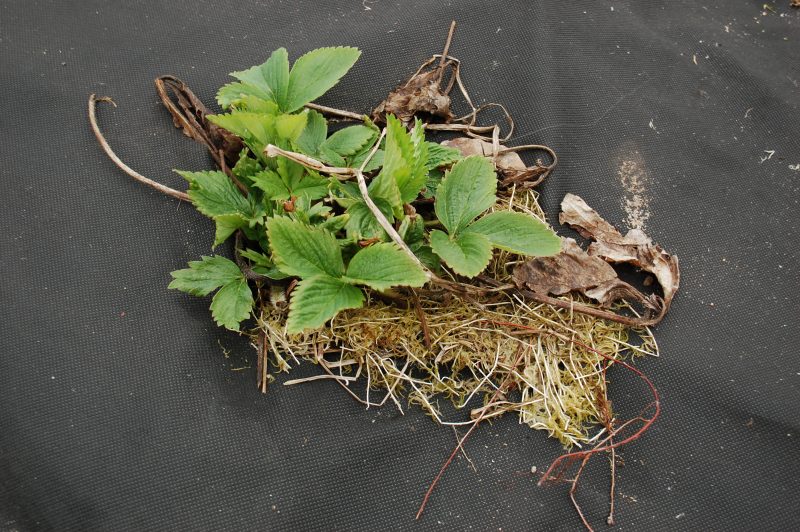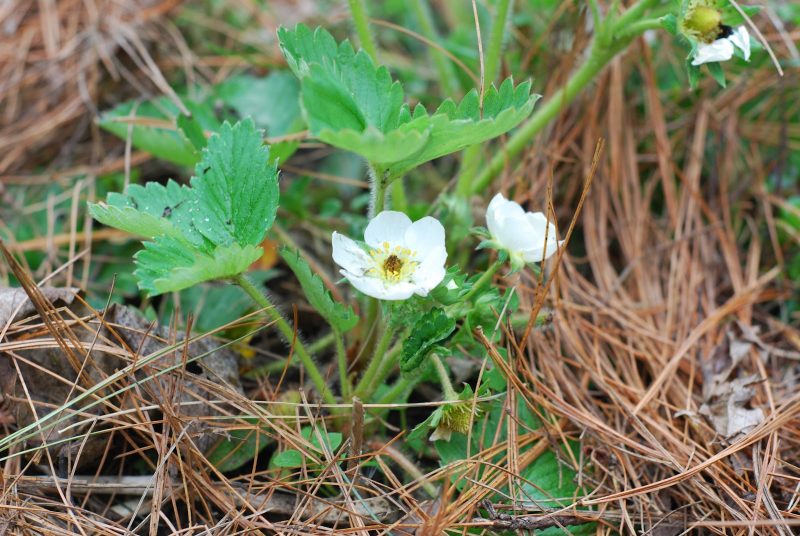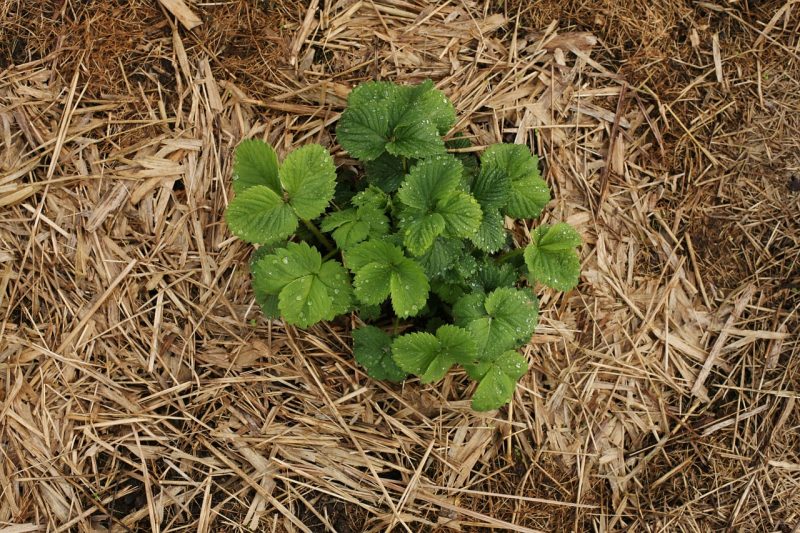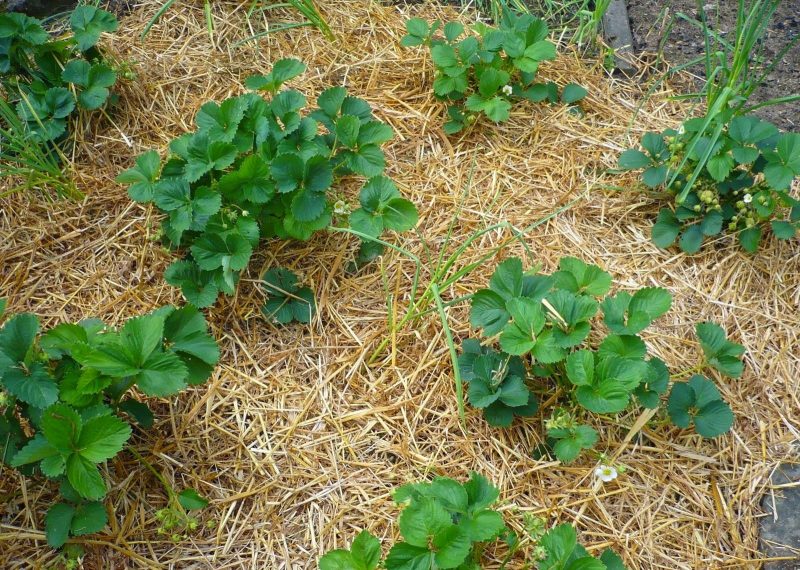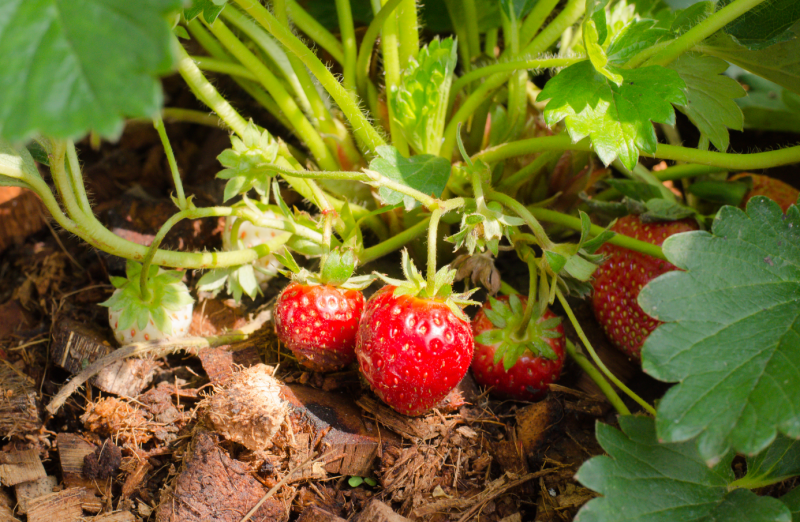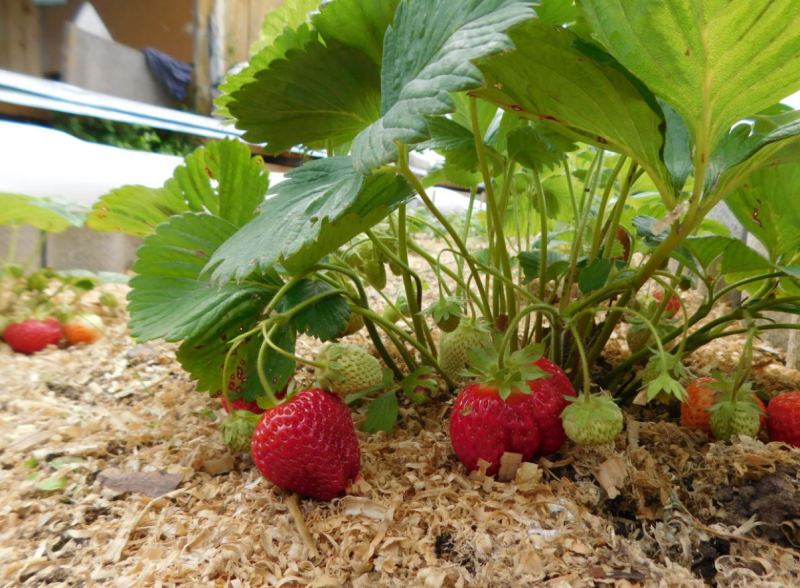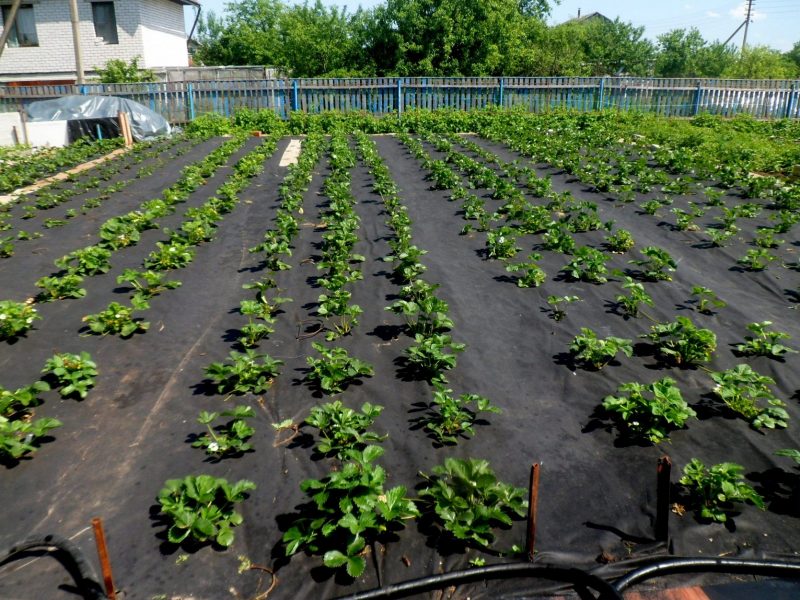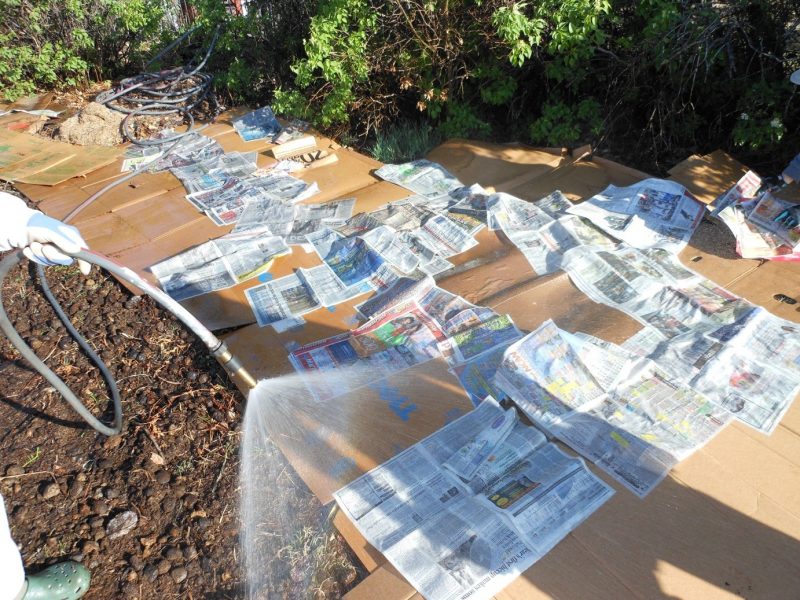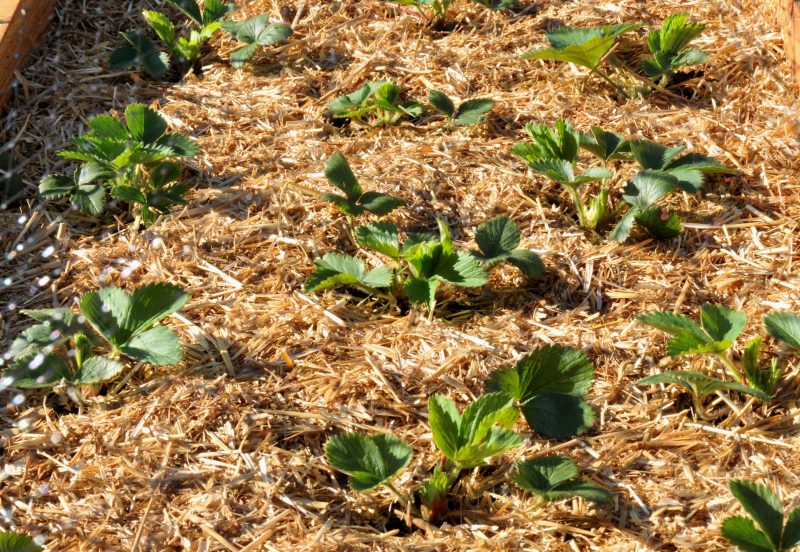It is unlikely that there will be a gardener who at least has not heard from the edge of his ear about the benefits of mulching strawberries. And these rumors are not exaggerated at all, since sheltering the surface layer of the earth with various materials - organic and artificial - significantly increases the chances of a summer resident to harvest his favorite berry.
Material Content:
What is mulching
Mulching the soil is a way to increase its fertility and protect the soil from the effects of external environmental factors. In nature, the earth is always covered with a layer of mulch - leaf or coniferous litter, which make up the forest litter, grass sod from grass, growing in meadows and clearings. If you lift the layer from plant debris, then under it you will find a layer of humus - an organic substance, so necessary both for agricultural crops and wild plants as a source of root nutrition.
Advantages and disadvantages
Every agricultural technique has its pros and cons, and mulching is no exception.
If we talk about the advantages of this method, then you should start with the main thing:
- Mulch allows you to maximally preserve the natural structure of the soil - lumpy, permeated by many capillaries formed by the activity of earthworms (and other animals) and dead roots of plants. And this is a direct path to the well-being of farmed crops, and, as a result, to their productivity.
- The use of organic mulch helps to fertilize the soil by increasing the fertile layer.
- Thanks to the mulching coating, the need of plants for moisture is reduced due to its conservation in the earth during dry periods. Evaporation from the soil surface is minimal.
- Due to the “blanket” of mulch, the daily temperature drops during the season are reduced, which cannot but have a beneficial effect on the vital functions of the root system of cultivated plants.
- The covering material protects the special berries from contamination during irrigation and eliminates the direct contact of strawberries with the soil surface. Due to this, ripe fruits are less prone to rot.
- The soil surface is protected from erosion due to weathering or erosion, which is often observed on land cultivated in the traditional way.
- Mulch delays fully or partially reduces the growth of weeds - the result depends on the type of shelter used and the exact observance of technology.
- The time spent by the farmer on the processing of the plot is reduced due to a decrease in the number of irrigation, cultivation and weeding.
- Stacked in winter, mulch protects the roots of perennial crops from freezing.
And everything would be rosy, if not significant flaws that could negate all the advantages of the method under consideration.
- An excessively thick layer of mulch during a period of prolonged rains begins to rot, creating a threat of infection of cultivated crops with fungal diseases. The situation is aggravated on heavy clay soils or with a high level of groundwater.
- Laying mulch in early spring immediately after snow melts leads to a delay in the growth and development of plants due to the fact that the soil under the covering layer warms up very slowly. Therefore, before mid-May, it makes no sense to apply this method. If the mulch was put in the fall, then you need to remove the layer, or at least grow it, so that it begins to let in the heat of the spring sun.
- Instead of inhibiting the growth of weeds, you can get the opposite effect if you cover the plantings with faded plants or hay, which is full of seeds.
- Organic mulch serves as a refuge not only for beneficial insects, but also for pests. Mice like to hide in straw, and slugs and snails in fallen leaves.
- Mulching with sawdust, shavings, shredded bark and coniferous branches on acidic soils is undesirable, since their application will only aggravate the situation.
Rules and methods of mulching, selection of materials
All types of mulch can be divided into 2 groups:
- organic materials (straw, hay, mowed grass, humus and compost, coniferous and leaf litter, shredded bark and tree branches, shavings and sawdust, reeds and green manure, nutshells and husks from seeds);
- artificial or inert materials (cardboard and kraft paper, roofing and roofing felt, film and agrofabric, expanded clay, gravel and other decorative dusting).
Not all of these species are suitable for mulching strawberries, but only a few.
Hay, fresh grass
This is one of the most affordable mulching materials - after all, there is a sufficient amount of grass cut or weed weeds in any garden plot. Fresh grass, including green manure, must be slightly dried before laying on the bed, it will have to be reported 3-4 times during the season, because the layer is very thin and decomposes very quickly.
Attention! Plants contain too much water and, laid with a thick carpet, can rot, especially if it rains. It is undesirable to allow the contact of strawberry leaves with fresh grass.
Hay is an unsuitable option for any agriculture, as it often contains weed seeds, because haymaking usually coincides with the first flowering in the meadows. In Britain it is believed that the best strawberry mulch is straw. It is no coincidence that its name "strawberry" is translated from English as "strawberry". This mulch contains a lot of fiber, therefore it decomposes slowly and it is enough to add it to the garden only once - at the end of spring, before the flowering of strawberries, with a layer of 10-15 cm (the straw will quickly settle).
It is interesting:mulching - what is it
Tree bark
A promising material for mulching strawberries is the bark of conifers, mainly pine.It has fungicidal properties and suppresses outbreaks of fungal diseases, and this is a weighty argument in favor of its use in strawberries.
In addition, the fine (up to 8 cm) and medium (8 to 15 cm) fractions of pine bark, usually used on beds, perfectly preserve soil moisture and its structure, and not only inhibits the growth of weeds, but also inhibits the germination of their seeds.
Information! Coniferous litter, often used to mulch strawberries, also has similar properties. There is one more advantage of it - sharp needles are not to the liking of slugs crawling to feast on a sweet berry.
Sawdust
For mulching, strawberries are an affordable and cheap material. The only difficulty is that fresh sawdust is not suitable for laying on beds. Before this, they should lie down, being layered with ash or dolomite flour to reduce acidity.
The second condition for mulching strawberries with sawdust is mandatory reinforced plant nutrition with infusions of mullein or green fertilizer every 2-3 weeks. The fact is that shavings, wood chips and sawdust absorb nitrogen from the soil, taking away the necessary nutrients from strawberries.
Before sprinkling sawdust in a bed with planted bushes, it must be well watered and fed with nitrogen. The thickness of the sawdust layer is not more than 6 cm, by the end of summer the mulch is completely or partially removed, because autumn long rains oversaturated the soil with moisture, which has a detrimental effect on the condition of the roots. The service life of this coating is 2 years.
Spunbond as a mulch
This artificial covering fabric of non-woven type has many other names: agrotex, lutrasil, agril, agrospan, etc. It can also vary in density, it can be black and white, and also two-layer: from below - black, from above - white. Agrofabric passes water well during irrigation, but at the same time retains moisture, preventing it from evaporating quickly.
For mulching strawberries, high density spunbond is used, because weeds can easily break through thinner material. In the southern regions, the use of white agrofabric reflecting the sun's rays is justified. For the middle strip with its long springs, a black non-woven fabric is better, which warms up faster and holds heat more efficiently.
Advice! White spanbond can be sprinkled with peat or humus, thereby “dimming” it. And black agrofibre is easily “clarified” with a small layer of straw.
The non-woven fabric is pulled over the bed, fixed around the perimeter, and then bush strawberries are planted in marked cross-shaped slots at a distance recommended for a particular variety.
Cardboard use
A great way to not only get rid of weeding, increase soil moisture and improve its structure, but also utilize packaging cardboard left after major purchases.
Before mulching strawberries, dig the soil surface, shed well and lay out the sheets, overlapping at least 20 cm.The edges should extend 10-15 cm beyond the bed. They are fixed with boards, stones or clods of earth. Before using cardboard, be sure to remove the existing tape. If the volumes of available material allow, then aisle can also be covered with cardboard.
This method has 3 significant disadvantages:
- Cardboard is an inorganic mulch, so its use does not increase soil fertility.
- Such covering material can only be consumed for 1 season, then annually changed to a new one.
- If carelessly fixed, it can be disrupted by a strong gust of wind.
Tips from experienced gardeners
Experienced summer residents will always find a couple of practical tips for beginners, for the first time deciding to grow a favorite berry crop.
- Choose the type of mulch should be based on the characteristics of a particular site. First of all, you need to know the type of soil and its acidity.
- On poor soils, for example, rocky or sandy, organic covering materials are preferred, which significantly improve its structure and enrich it with nutrients.
- The most reliable way to restrain the growth of weed grass is to use a dense two-layer agrofabric. The lower black layer will stop the seedlings of unnecessary vegetation and retain heat, and the upper white layer will not allow the soil to overheat.
- By mulching strawberries with sawdust, it is advisable to make a substrate of newspapers or kraft paper, which will more effectively inhibit weed growth.
- It is undesirable to mulch strawberries in the fall. This advice applies primarily to inorganic-type covering materials, as well as sawdust and shavings. Otherwise, the chance of partial or complete ripening of the berry plantation increases. For the winter, it is better to opt for straw, leaf or coniferous litter.
Evidence of the benefits of strawberry mulching is beyond doubt, but a positive result is possible only if a thoughtful approach to the task.


